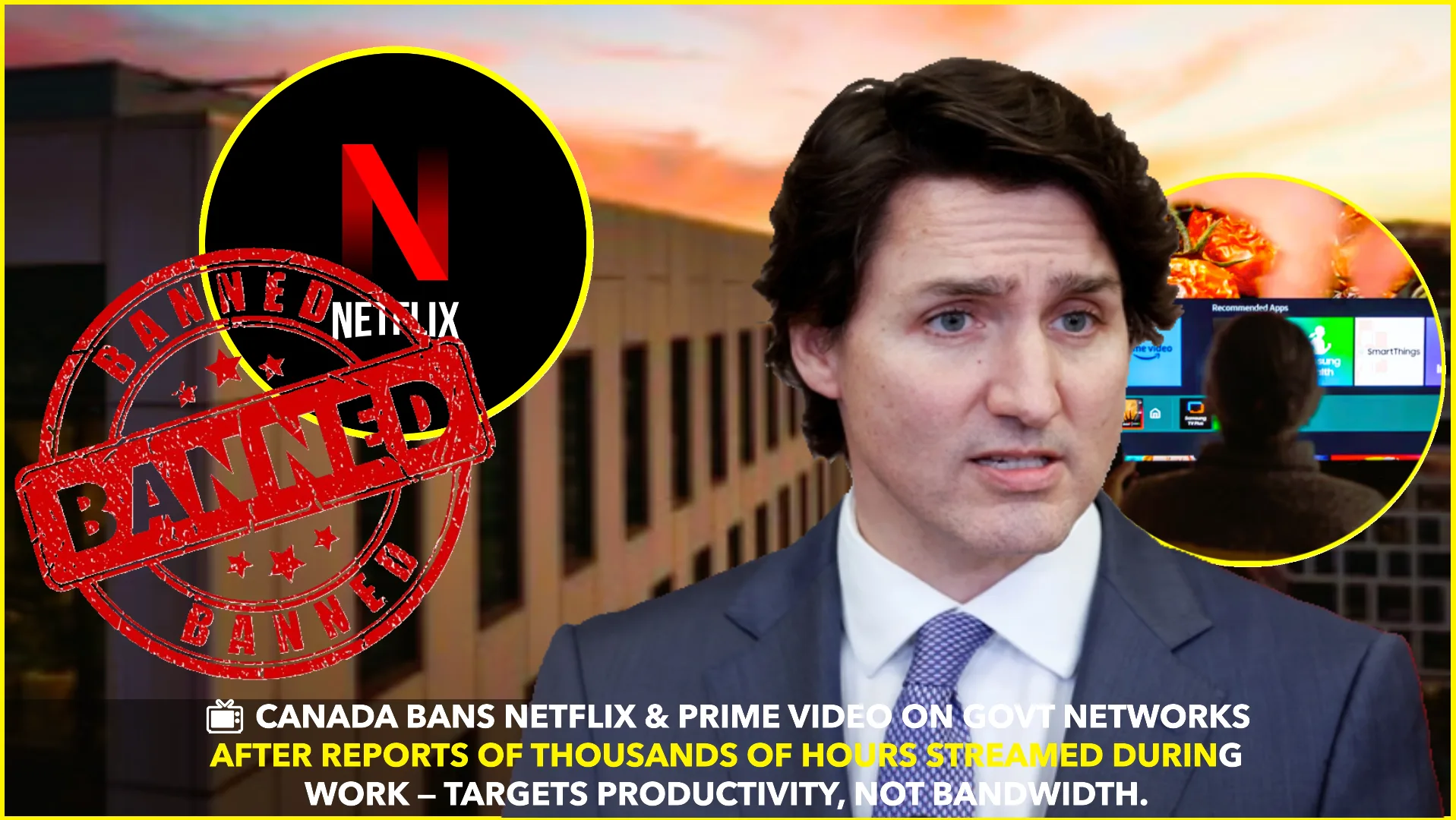Ottawa, August 2025 – In a bold administrative move, Canada has restricted access to major streaming services such as Netflix, Prime Video, Disney+, and others on federal government networks. This decision comes after internal audits revealed that public employees in at least 45 federal departments streamed thousands of hours of entertainment content during official working hours.
The restriction, led by Shared Services Canada (SSC) — the agency responsible for managing federal digital infrastructure — is not aimed at reducing network strain, but rather at addressing what officials describe as a “people management” issue.
Internal data highlighted startling usage patterns. One unnamed department logged bandwidth consumption equivalent to over 3,000 hours of video streaming, while another recorded nearly 10 terabytes of data on its guest Wi-Fi network in just a month. While these figures represent outliers, they have sparked concern among federal administrators about workplace discipline and employee productivity.
Officials emphasized that the overall internet traffic from these services was relatively modest — with the highest usage capped at 3 terabytes per department. Nonetheless, the government sees the move as necessary to reinforce workplace expectations and ensure public resources are being used responsibly.
“It’s not about bandwidth, it’s about performance and perception,” said a senior SSC official, who spoke on condition of anonymity. “This is a people issue — and we’re sending a clear message.”
Interestingly, platforms like YouTube remain accessible, raising questions about the selectiveness of the enforcement. Critics argue this points to inconsistency and possibly a symbolic crackdown meant to influence public perception rather than resolve an actual crisis.
Public reaction has been mixed. Some support the ban as a logical step to maintain professional decorum, while others see it as micromanagement that ignores larger structural issues.
Union representatives have also weighed in, cautioning the government against “blanket punitive measures” without broader engagement on workplace digital policy. “Most public servants are diligent and committed. A few data points shouldn’t define the majority,” one union spokesperson commented.
While entertainment content is no longer accessible on government networks, employees still have full access to news platforms, internal services, and professional development tools.
This isn’t the first time Canada has tightened control over digital behavior in the workplace. Similar restrictions were introduced during the COVID-19 pandemic for remote staff, though enforcement was lax. The new block, however, applies directly to wired and wireless networks in federal buildings and is expected to be permanent unless policies change.
Whether this move sets a precedent for stricter digital governance in public offices remains to be seen. But one thing is clear: streaming on the taxpayer’s dime is no longer tolerated.










